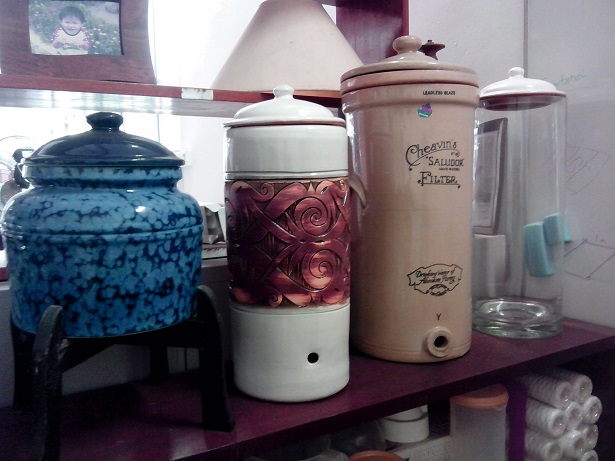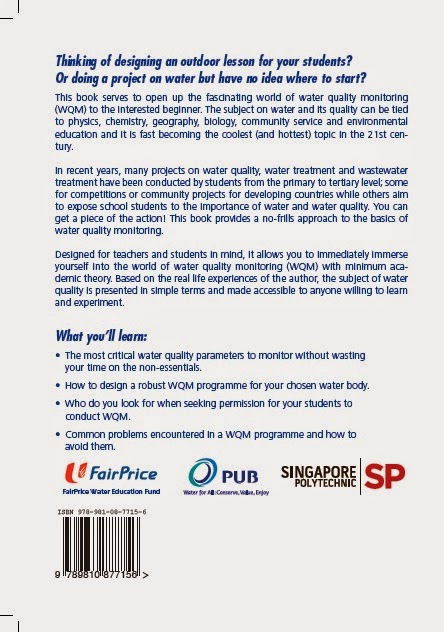Hi Chen,
First at all, my name is Aizat and I am a technician from Malaysia. I have come through your blog: http://waterqualityinsingapore.blogspot.com/ , and I think you can answer my question regarding Singapore coastal water quality. I would like to ask is there any classes or threshold limit for Singapore water quality parameters? For example, in Malaysia, we have Marine Water Quality - https://www.doe.gov.my/portalv1/en/info-umum/piawaian-dan-kriteria-kualiti-air-marin-malaysia/301 , that define water usage and parameter for coastal area.
Thank You
Hi Aizat,
Thanks for the link to Malaysia's marine water quality.
As for Singapore:
http://www.nea.gov.sg/anti-pollution-radiation-protection/water-pollution-control
"Coastal water samples are analysed for metals, total organic carbon, and other physical, chemical and bacteriological parameters."
The above are under NEA (National Environment Agency). Nope, no mention of the exact parameters measured or their threshold concentrations
Perhaps, the closest to publicly available water quality guidelines will be WHO Guidelines (2003) for recreational water quality. But this only applies to certain beaches in Singapore, again under jurisdiction of NEA.
http://www.nea.gov.sg/anti-pollution-radiation-protection/water-pollution-control/recreational-water-quality
"Singapore adopts the World Health Organisation (WHO) Guidelines (2003) for recreational water quality at our beaches and fresh water bodies.
The guidelines are used to assess the suitability of a recreational beach or fresh water body for primary contact activities (e.g. swimming, skiing and wakeboarding) where:
- the whole body or the face and trunk are frequently immersed; or
- it is likely that some water will be swallowed.
The parameters used to assess the water quality are as follows:
For recreational beaches:
- 95% of the time, the Enterococcus counts should be less than or equal to 200 counts per 100 millilitres of water;
- Susceptibility of the location to faecal influence;
- Only beaches classified as 'Good' and above will be considered suitable for primary contact activities.
Water Quality of Singapore's Recreational Beaches in 2016
NEA conducts weekly sampling of water quality from the seven (7) recreational beaches listed below:
- Sentosa Island Beaches (Siloso beach, Palawan beach, Tanjong beach)
- Seletar Island Beach
- Sembawang Park Beach
- Changi Beach
- East Coast Park Beach
- Pasir Ris Beach
- Punggol Beach
Our Maritime and Port Authority (MPA) administers the Prevention of Pollution of the Sea Act but it is more of a prescription for stakeholders to avoid marine pollution. Again, no mention of actual water quality parameters and threshold values.
Therefore, I am afraid I do not have the answers you want. Assuming NEA still does its coastal water sampling and testing (no reason to assume otherwise), I believe they ought to have certain standards to adhere to. Regrettably, these are not shared in the public domain.
Updated
by author on 16/6/17:
Thanks
to an update from Aizat, the water quality parameters monitored by NEA
(not PUB! PUB is into water supply and wastewater management) along Singapore's
coastal areas may be obtained from NEA
Figure: (Source: NEA) Locations of Non-Catchment and
Seawater Sampling Points
|
Interestingly,
NEA already has an automated and continuous water quality monitoring system in
place along our coasts.
"
A
real-time, continuous water quality monitoring system for the coastal waters of
Singapore was fully commissioned in 2014. The system comprises 8 buoy-based
monitoring stations with sensors for key water quality parameters. The
locations of the stations are in Chart 5.11. Data from the
stations is transmitted real-time to an Operational Management System (OMS)
which processes and manages the data. The OMS also incorporates water quality
models for forecasting water quality and to predict, backtrack and identify
pollution sources and determine coastal areas affected by oil or chemical spill
incidents.
"
Figure: (Source: NEA) Monitoring Locations and Water
Quality Parameters Measured in real time
|
Unfortunately,
we can't find any threshold values linked to the parameters given in the figure
above.
I do have one question
though - how effective is this online continuous monitoring system in reducing
the damage from phytoplankton events on fish farms along the Johor Straits,
especially in the Pasir Ris area?








